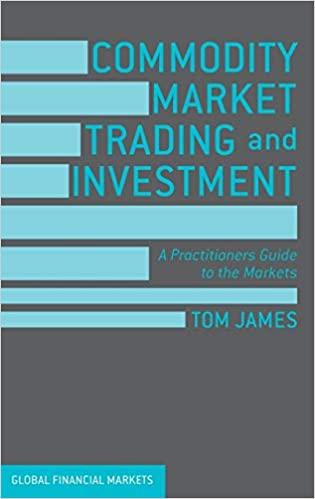Question
Assume that the S&P 500 is the market portfolio. The S&P 500 has an expected return of 10%, with a standard deviation of 30% per
Assume that the S&P 500 is the market portfolio. The S&P 500 has an expected return of 10%, with a standard deviation of 30% per year. FB's stock has an expected return of 12%, with a standard deviation of 32% per year. The risk-free rate is 4%. Assume that CAPM holds for the remainder of this problem.
a) Is this combination of expected returns and standard deviations possible according to the CAPM? Why or why not?
b) Now, suppose, contrary to above, that we do not know the expected return of FB's stock or the standard deviation of its return. However, we do know that its covariance with the S&P 500 is 0.135. What is the expected return on Microsofts stock?
c) Suppose that the expected return on FB's stock is as in part a (i.e., 12%). Suppose that the expected return on Alphabets stock is 16%. What is the beta of Alphabets stock?
d) Suppose that the expected return on the S&P 500 is 10%, on Metas stock is 12%, and on Alphabets stock is 16%. Calculate the expected return and beta of a portfolio that invests in the following four assets in the following proportions:
45% in FB
-25% in Alphabet (i.e., a short position)
50% in the S&P 500
30% in the risk-free asset.
Step by Step Solution
There are 3 Steps involved in it
Step: 1

Get Instant Access to Expert-Tailored Solutions
See step-by-step solutions with expert insights and AI powered tools for academic success
Step: 2

Step: 3

Ace Your Homework with AI
Get the answers you need in no time with our AI-driven, step-by-step assistance
Get Started


